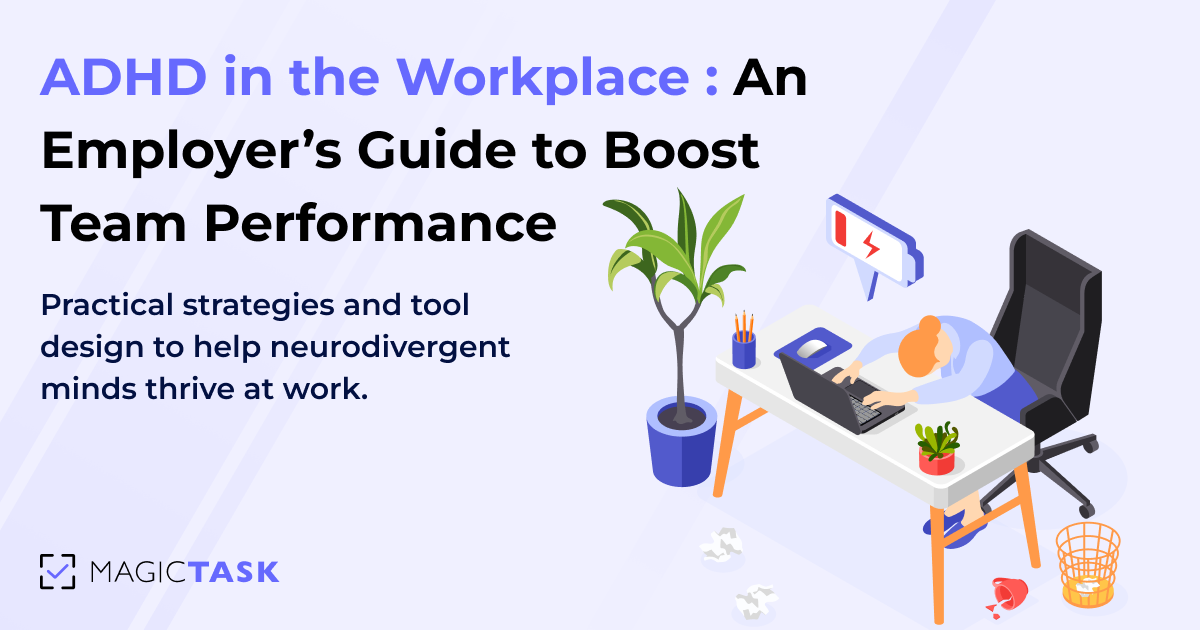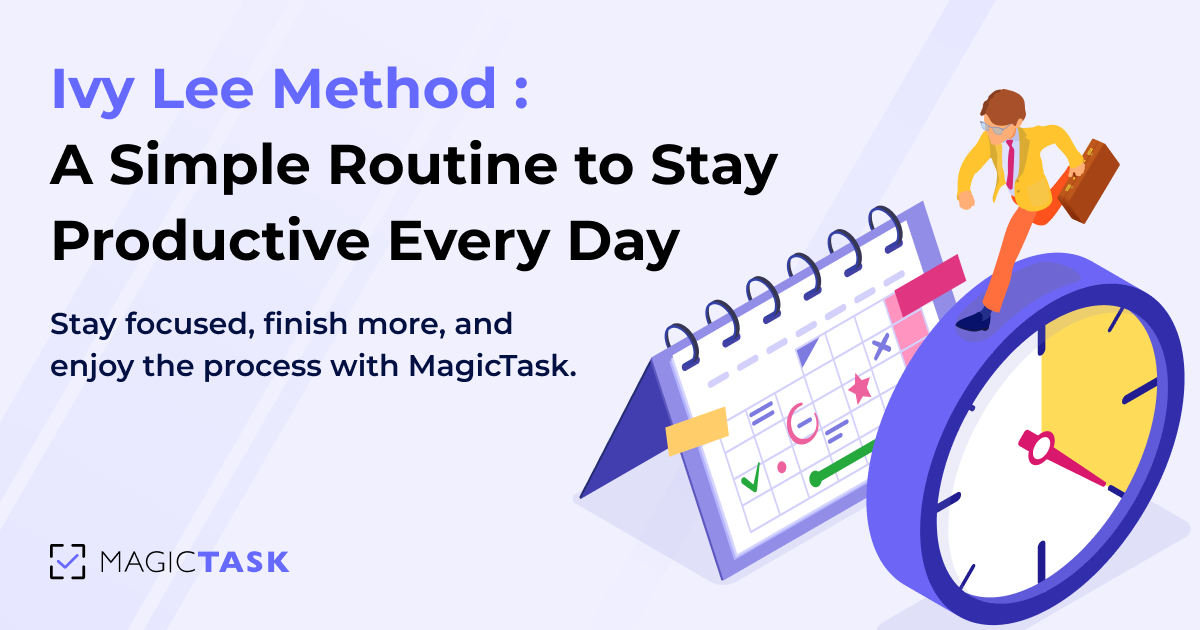Mastering Time-Blocking with MagicTask V3: Turning Productivity into a Winning Game
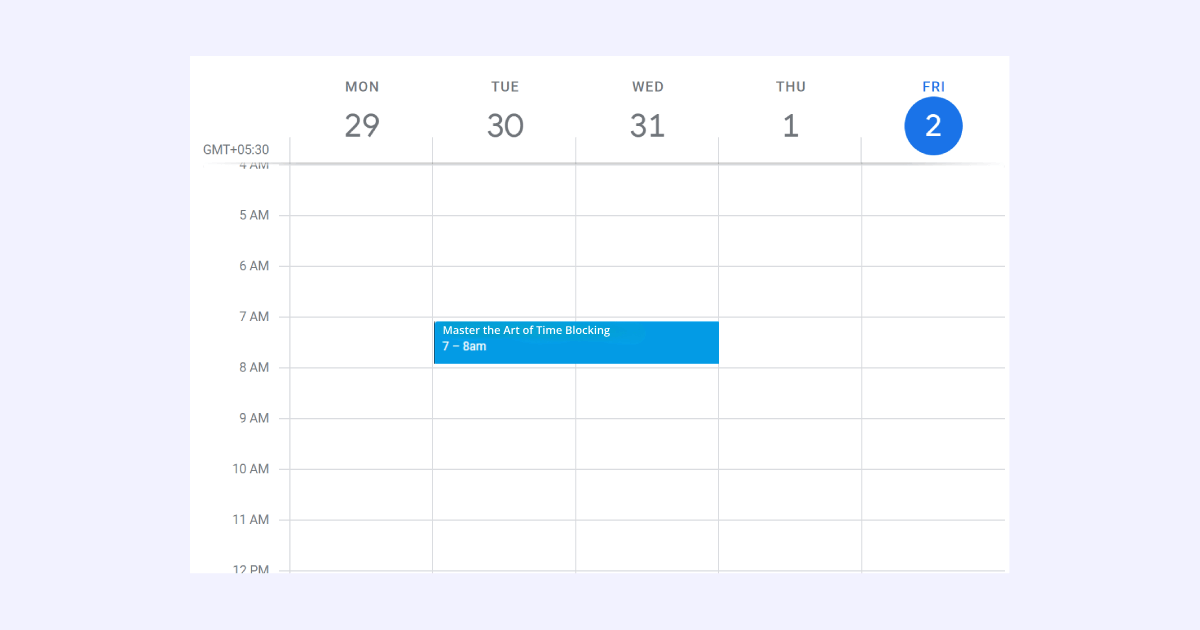
In the relentless pursuit of productivity, we often find ourselves navigating through a labyrinth of strategies, each promising to be the panacea for our burgeoning lists of tasks and commitments. Amid this overwhelming sea of options, one method stands out not merely for its practicality but for its profound philosophy on managing time—time-blocking. This approach has rapidly gained traction among productivity enthusiasts and skeptics alike, celebrated for its straightforward yet profoundly effective methodology.
At its core, time-blocking transcends the conventional, reactive nature of to-do lists. Instead of a never-ending catalogue of tasks, time-blocking encourages us to divide our day into clearly defined segments, dedicating each to a specific task or set of tasks. This method transforms the abstract concept of "having things to do" into a tangible, structured schedule. It's akin to plotting out a roadmap for your day, where each turn and stop is anticipated and planned for.
What sets time-blocking apart is its dual promise: to significantly boost our productivity while simultaneously bestowing a sense of serenity upon our often chaotic daily routines. By allocating a specific time to each task, we eliminate the paralysis of choice—deciding what to do next becomes a relic of the past. This preemptive planning allows us to engage fully in the task at hand, secure in the knowledge that time has been set aside for other tasks as well. The result is not just a more productive day but a more peaceful one, where the tyranny of the urgent is replaced by the tranquility of the planned.
Moreover, time-blocking offers a flexible framework that can be customized to fit the unique rhythms and demands of individual lives. Whether you're a morning person who thrives on tackling the most challenging tasks at dawn or someone who finds their stride in the quiet of the evening, time-blocking can be tailored to harness your peak hours of focus and energy. It accommodates the ebbs and flows of motivation and concentration, allowing for breaks and adjustments, thereby ensuring that the schedule serves you, not the other way around.
The Essence of Time-Blocking
Time-blocking emerges as a revolutionary approach to time management, standing in stark contrast to traditional methods that often leave us reacting to tasks as they come. This technique is not just about making lists; it's about proactively carving out segments of time for dedicated focus on each task before the day even begins. By transforming our calendars into a meticulously organized mosaic of tasks, time-blocking turns the nebulous cloud of "things to do" into a concrete, actionable plan for the day.
At its heart, time-blocking is built upon a simple yet powerful premise: that which is scheduled is more likely to be accomplished. It compels us to commit to tasks by assigning them a specific time slot, much like appointments or meetings. This commitment mechanism significantly reduces the likelihood of procrastination, as each task is transformed from a suggestion to an obligation. It acknowledges the finite nature of time and encourages us to use it with intention and purpose.
One of the most compelling aspects of time-blocking is its ability to make the abstract tangible. Each block of time is allocated to activities that advance personal and professional goals, making it a dynamic tool for both planning and reflection. By visualizing how time is spent, we gain insight into our priorities and can adjust our schedules to align more closely with our long-term objectives. This visualization isn't just practical; it's motivational, providing a clear roadmap to a productive day.
Moreover, time-blocking advocates for a holistic view of time management. It recognizes that productivity is not merely about work tasks but encompasses all aspects of life. From deep work sessions to exercise, leisure, and family time, every facet of one's day is accounted for and valued. This comprehensive approach ensures a well-balanced schedule that nurtures not just professional achievement but personal well-being too.
The methodology also offers unmatched flexibility within its structured framework. While tasks are scheduled, time blocks can be moved and adjusted as needed, accommodating the inevitable uncertainties of daily life. This adaptability is key to the sustainability of time-blocking as a time management technique, allowing it to be a reliable foundation in the ever-changing landscape of our days.
In essence, the essence of time-blocking lies in its ability to transform our relationship with time. By encouraging us to schedule tasks with deliberate intention, it ensures that our most precious resource is not just spent, but invested wisely. Time-blocking doesn't just promise a more organized day; it offers a more intentional and fulfilling life, where every moment is lived with purpose.

Psychological Benefits and Productivity Gains
The psychological landscape of our workday is often a complex interplay of motivation, focus, anxiety, and satisfaction. Time-blocking, by structuring our time with precision, exerts a profound influence on this landscape, offering benefits that ripple through both our mental state and our productivity levels.
Setting Clear Expectations
One of the cornerstone advantages of time-blocking is its ability to set clear, actionable expectations for the day. This clarity is more than just organizational—it's psychologically liberating. By defining what needs to be accomplished and allocating a specific time for each task, time-blocking demystifies the workday, reducing the anxiety that often accompanies the unknown. This preemptive clarity helps to create a mental environment where focus can flourish, unencumbered by the stress of indeterminate obligations.
Enhancing Focus and Minimizing Decision Fatigue
In a world rife with distractions, maintaining focus is increasingly challenging. Time-blocking offers a sanctuary of concentration. By dedicating specific blocks of time to individual tasks, it eliminates the constant barrage of decision-making about what to do next. This minimization of decision fatigue is crucial; every unnecessary decision we make depletes our mental energy, leaving less for the tasks that truly matter. Time-blocking conserves this energy by providing a predetermined path through the day's obligations, allowing us to invest our full cognitive resources into each task.
Motivation Through Completion
The act of completing a task within its allocated time block is a powerful psychological trigger. Each completion delivers a hit of dopamine, the brain's reward neurotransmitter, providing a sense of pleasure and accomplishment. This biochemical reward system creates a continuous loop of positive reinforcement, where the satisfaction of task completion fuels the motivation to tackle the next one. Over time, this cycle builds a robust foundation of self-efficacy, reinforcing the belief in our ability to meet our goals and manage our time effectively.
Moreover, the visibility of progress inherent in time-blocking amplifies this motivational cycle. Seeing a day's schedule transition from a series of planned blocks to a list of completed tasks is visually and emotionally satisfying. It offers tangible proof of productivity, transforming abstract achievements into something concrete and measurable.
The Broader Impact on Productivity and Well-Being
Beyond individual tasks, the cumulative effect of these psychological benefits on overall productivity and well-being is significant. Time-blocking, by providing structure and reducing stress, enhances mental clarity and energy, which are vital for sustained high performance. Furthermore, the technique's emphasis on allocating time for all aspects of life—including breaks, personal projects, and leisure activities—ensures a more balanced, holistic approach to productivity. This balance is crucial not just for preventing burnout but for fostering a sense of fulfillment and happiness in both work and life.
In essence, the psychological benefits of time-blocking extend far beyond mere organization. By setting clear expectations, enhancing focus, reducing decision fatigue, and creating a motivating cycle of completion, time-blocking transforms the way we approach our days. It not only makes us more productive but also more grounded, satisfied, and mentally resilient.
Setting Up Your Time-Blocking System
Implementing a time-blocking system requires a strategic approach, beginning with a comprehensive review of your tasks and goals. This foundational step is about gaining clarity on what needs to be accomplished and recognizing that not all tasks hold equal weight in the grand scheme of your objectives.
Reviewing Tasks and Goals

Start by laying out a visual map of your tasks and goals. This could be on a digital platform or a physical notebook, whichever you find most conducive to clear thinking. List everything you hope to achieve in the short term (daily or weekly) and categorize these tasks based on their alignment with your broader, long-term goals. This exercise not only aids in prioritization but also ensures that your daily efforts are steps towards your bigger picture.
Prioritization
With your tasks laid out, engage in a prioritization exercise. Utilize the Eisenhower Matrix or a similar method to categorize tasks into urgent/important, important/not urgent, urgent/not important, and neither urgent nor important. This classification serves as a guide to allocating your time blocks, ensuring that you're not merely busy but effectively productive.
Estimating Time Requirements
For each task, assign a realistic time estimate. If you're unsure, it's better to overestimate than underestimate to avoid over-packing your day. Remember, the goal of time-blocking is not to fill every minute with work but to create a balanced schedule that includes time for rest and unplanned demands.
Dividing Your Day into Time Blocks
With priorities set and time estimates in hand, begin carving your day into distinct time blocks. These blocks can range from focused work periods to short breaks, lunch, exercise, and even leisure activities. The key is to ensure that each aspect of your day is intentionally planned. Digital calendars or specialized apps can be invaluable tools here, offering visual layouts and reminders to keep you on track.
Including Breaks and Buffer Times
An often-overlooked aspect of time-blocking is the inclusion of breaks and buffer times. Breaks are essential for mental refreshment and maintaining high levels of focus throughout the day. Similarly, buffer times account for life's unpredictability—delays, overruns, or unexpected tasks. Allocating buffer times within your schedule can significantly reduce stress and provide the flexibility to adapt as needed.
Regular Review and Adjustment
Finally, treat your time-blocking system as a living document. At the end of each day or week, review your blocks to assess what worked and what didn't. Were some tasks underestimated in terms of time required? Were there blocks consistently interrupted by unforeseen demands? Use these insights to adjust your future blocks, refining your system for greater efficiency and satisfaction.
Setting up a time-blocking system is a deliberate process that marries intention with flexibility. By thoughtfully reviewing tasks, prioritizing effectively, and accommodating the natural ebb and flow of daily life, you create a structured yet adaptable framework that enhances both productivity and well-being. Remember, the ultimate aim of time-blocking is not rigid adherence to a schedule but the cultivation of a balanced, purposeful approach to managing your time and achieving your goals.
Also Read: The Pomodoro Technique: Time Management Method You Should Try
Strategies for Effective Time-Blocking
Implementing time-blocking as a strategy for managing your day requires more than just assigning tasks to time slots. To truly harness its power and make your days both productive and manageable, consider these refined strategies:
Prioritization: Aligning Tasks with Goals
The essence of effective time management lies in doing the right things, not just doing things right. Start by evaluating your tasks in the context of your long-term objectives. Tasks that directly contribute to these goals should take precedence. This approach ensures that your daily efforts are investments in your future, not just checks on a list. To prioritize effectively, ask yourself which tasks, if completed, would bring you closer to your goals. These tasks deserve the prime slots in your day—typically, when your energy and concentration are at their peak.
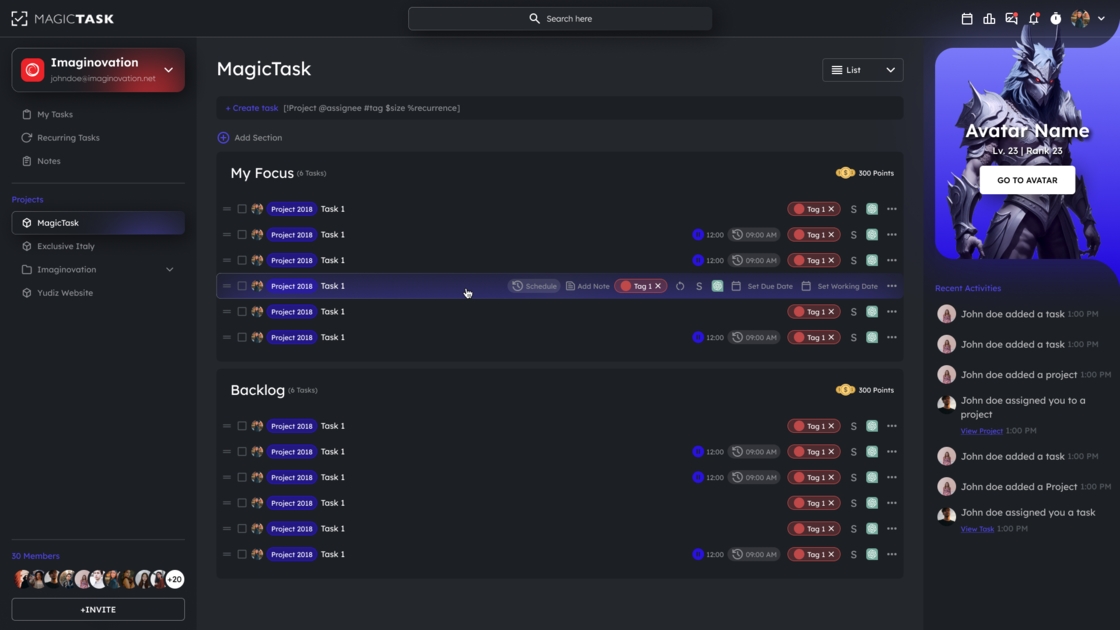
Task Batching: Maximizing Efficiency
Task batching is a technique that involves grouping similar tasks together and dedicating specific blocks of time to complete them in succession. This strategy leverages the principle of context switching, minimizing the mental load and time lost in shifting between different types of tasks. For instance, batch all your email responses or calls in one time block, and dedicate another to deep, focused work. By organizing your day into thematic blocks, you streamline your workflow, reduce setup and wind-down times, and enhance overall efficiency.
Contingency Time: Planning for the Unpredictable
No matter how meticulously you plan, the unpredictability of life can throw your schedule off course. Integrating contingency time—blocks of unscheduled time reserved for handling unexpected tasks or overflows from previous tasks—into your day is crucial. This buffer ensures that when interruptions occur, they don’t derail your entire schedule. A good rule of thumb is to leave about 10-15% of your day as contingency time, adjusting based on the variability of your typical day. This strategy not only reduces stress but also provides a more realistic and flexible approach to time management.
Regular Review and Reflection: Honing Your Strategy
The final, critical strategy for effective time-blocking is the ongoing process of review and reflection. Set aside regular intervals (weekly or monthly) to evaluate the effectiveness of your time-blocking strategy. Reflect on what tasks consistently take more time than allocated, which time blocks are most productive, and how well your tasks are aligning with your long-term goals. This analysis helps identify patterns, inefficiencies, and opportunities for adjustment. It’s an essential step for continuous improvement, allowing you to refine your approach, reallocate your time more effectively, and ensure your time-blocking strategy evolves with your changing needs and priorities.
Implementing these strategies transforms time-blocking from a simple scheduling exercise into a dynamic framework for achieving both immediate tasks and long-term goals. Prioritization ensures your most important tasks get the attention they deserve, task batching increases your operational efficiency, contingency time adds necessary flexibility, and regular review and reflection keep your strategy aligned with your evolving goals. Together, these strategies form the pillars of an effective time-blocking system, one that not only enhances productivity but also contributes to a more balanced and fulfilling life.
Overcoming Challenges in Time-Blocking
Time-blocking, despite its numerous benefits, is not without its challenges. Common stumbling blocks such as overbooking and underestimating task durations can undermine its effectiveness. However, with strategic adjustments and a mindful approach, these obstacles can be navigated successfully.
Avoiding Overbooking
Overbooking is a frequent issue that arises from an overly optimistic assessment of how much can be accomplished in a day. This optimism, while admirable, often fails to account for the intricacies and unpredictability of real-life tasks. To mitigate this, start by adopting a more conservative approach to scheduling. Allow more time than you think each task will need, acknowledging that interruptions, transitions between tasks, and unexpected complications are part of the workday. This doesn’t mean padding your schedule with excessive downtime but rather being realistic about your capabilities and external demands on your time. As you become more attuned to your working pace and the nature of your tasks, you can gradually refine your time estimates to more accurately reflect reality.
Managing Task Duration Estimates
Underestimating how long tasks will take is another challenge that can disrupt your time-blocking strategy. This often stems from a lack of historical data on your own work habits or the novel nature of a task. Combat this by tracking the time you spend on various tasks over a period, using a simple stopwatch or digital tools designed for time tracking. This data serves as a valuable reference for future planning, enabling you to make more informed estimates. Additionally, employing techniques like the Pomodoro Technique, where work is broken down into intervals (traditionally 25 minutes) followed by short breaks, can help gauge how many intervals a particular task requires, offering a practical framework for estimating task duration.
Learning to Say No
An essential skill in effective time management and a critical strategy in overcoming time-blocking challenges is learning to say no. This involves evaluating new tasks or commitments against your current priorities and schedule. If a task doesn’t align with your goals or if accommodating it would require sacrificing time allocated to higher-priority tasks, it’s important to decline politely. Saying no is not just about guarding your time but also about ensuring that your efforts are concentrated on what truly matters. It’s about making strategic choices that align with your long-term objectives, rather than being swayed by the urgency or demands of others.
Incorporating Flexibility
Finally, while time-blocking encourages a structured approach to managing your day, incorporating flexibility is key to overcoming its challenges. Life is unpredictable, and rigid adherence to a blocked schedule can sometimes be more hindering than helpful. Be prepared to adjust your blocks as necessary, whether it means moving tasks to accommodate unforeseen demands or shortening a block when you complete a task more quickly than expected. This flexibility ensures that time-blocking remains a tool that serves you, facilitating productivity and balance rather than becoming a source of stress.
Overcoming the challenges of time-blocking requires a blend of realistic planning, self-awareness, and strategic refusal. By setting more generous time estimates, becoming adept at gauging task durations, learning to say no, and maintaining a flexible approach to scheduling, you can harness the full potential of time-blocking. These strategies not only enhance the effectiveness of time-blocking but also contribute to a more balanced, productive, and satisfying work life.
Time-Blocking in the Digital Age: MagicTask V3
In the era of digital innovation, time-blocking has transcended traditional paper planners and calendars, embracing the sophistication and versatility of digital tools. MagicTask V3 stands at the forefront of this evolution, revolutionizing the way we approach time management by integrating the principles of gamification. This modern twist not only adheres to the foundational aspects of time-blocking but elevates the experience, making it more engaging and rewarding.
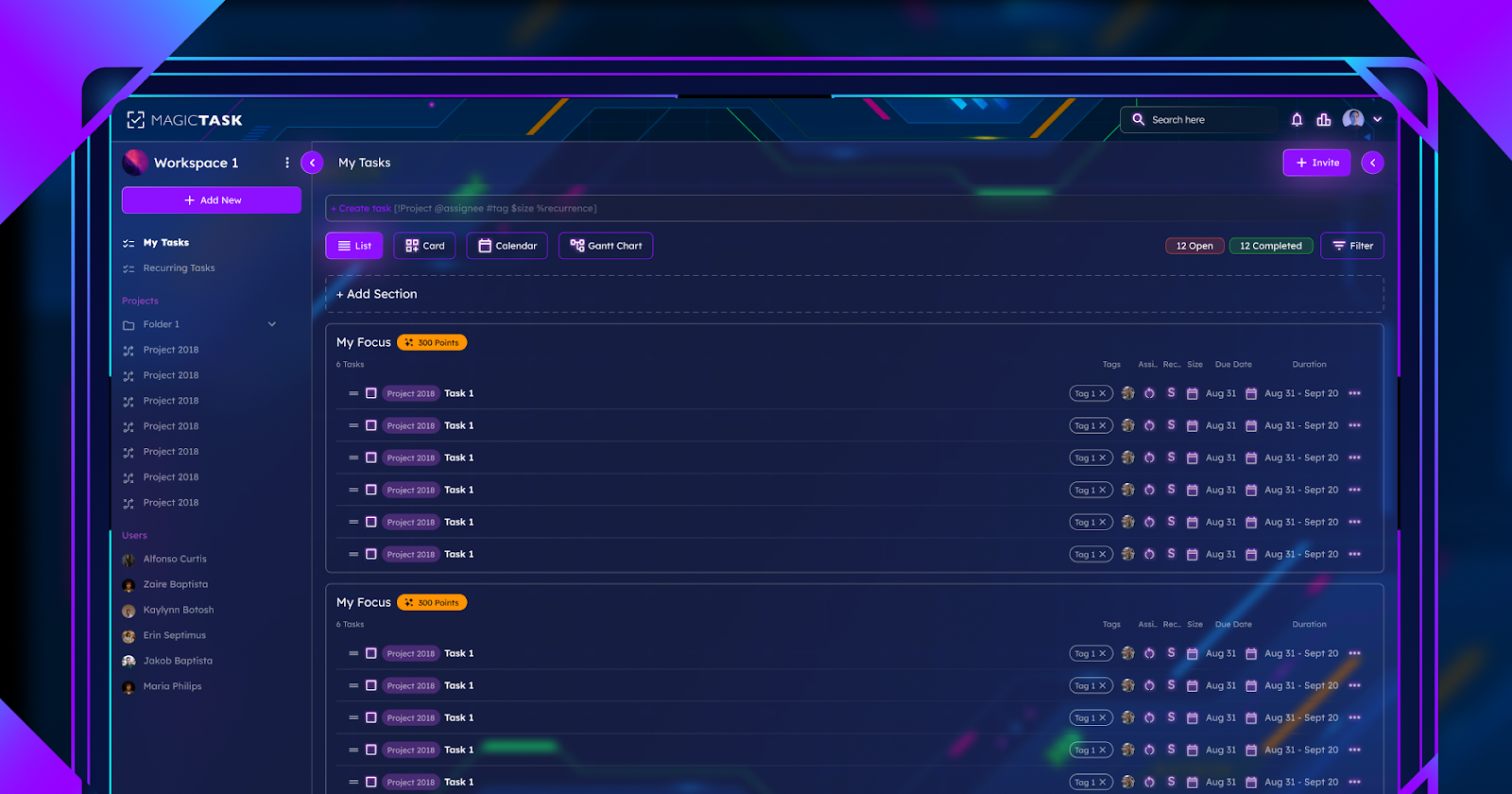
Gamification as a Motivational Force
MagicTask V3 harnesses the power of gamification to inject a sense of play and competition into the routine task management process. By rewarding users with points, badges, or levels for completing tasks within their allocated time blocks, it taps into the inherent human desire for achievement and recognition. This approach transforms mundane tasks into challenges to be overcome, providing a continuous stream of motivation and satisfaction. The psychological impact of this gamification cannot be overstated; it leverages the same reward mechanisms triggered by video games, making productivity feel less like a chore and more like an enjoyable pursuit.
Intuitive Scheduling for Dynamic Lives
At the heart of MagicTask V3 is its user-friendly interface, designed with the understanding that flexibility is key to effective time management. The platform allows for seamless scheduling and rescheduling of tasks, accommodating the fluid nature of daily life. Whether it’s a last-minute meeting, an unexpected delay, or a task that requires more time than anticipated, MagicTask V3’s drag-and-drop interface makes it easy to adjust your schedule on the fly. This level of adaptability is essential for maintaining a time-blocking strategy that is realistic, practical, and responsive to your needs.
Integrating with Your Digital Ecosystem
MagicTask V3 doesn’t operate in isolation; it’s designed to integrate smoothly with your existing digital ecosystem. From syncing with your preferred calendar apps to integrating with project management tools, MagicTask V3 ensures that all your time-related data is centralized and accessible. This connectivity enhances the utility of time-blocking by providing a holistic view of your commitments, deadlines, and priorities across all platforms, ensuring that no task falls through the cracks.
Analytics for Continuous Improvement
Beyond scheduling, MagicTask V3 offers analytics and reporting features that provide insights into your productivity patterns. By analyzing your task completion rates, time spent on different types of activities, and your success in adhering to your time blocks, MagicTask V3 helps you identify areas for improvement. This data-driven approach allows you to refine your time-blocking strategy over time, optimizing your schedule for maximum efficiency and effectiveness.
Where Do We Go From Here?
In the digital age, tools like MagicTask V3 are transforming time-blocking from a static scheduling technique into a dynamic, interactive strategy that not only enhances productivity but also makes the process enjoyable. By blending the core principles of time-blocking with elements of gamification, intuitive scheduling, and integrated analytics, MagicTask V3 stands as a testament to the potential of digital tools to revolutionize how we manage our time. For those looking to optimize their time-blocking strategy, MagicTask V3 offers a compelling solution that promises not just better time management, but a more motivated, engaged, and satisfying approach to accomplishing daily tasks.
Conclusion
Time-blocking transcends the realm of simple productivity hacks to embed itself as a fundamental philosophy for managing one's life. It challenges us to reconceptualize our relationship with time, treating it not as an endless stream but as a precious, finite resource that demands careful allocation. This method advocates for a deliberate and intentional approach to our days, ensuring that each hour is spent in a manner that aligns with our deepest values and long-term goals.
By embracing time-blocking, we empower ourselves to take control of our schedules, navigating our tasks with purpose and direction. It liberates us from the tyranny of the urgent and the chaos of disorganization, paving the way for a structured yet flexible routine that accommodates both our ambitions and our well-being. Through this lens, productivity is redefined: it becomes less about the sheer volume of tasks completed and more about the significance of the tasks we choose to undertake.
Moreover, time-blocking has the profound ability to restore the joy and satisfaction that come from engaging in truly productive work. When we complete tasks that are meaningfully connected to our larger objectives, we experience a deeper sense of fulfillment that transcends the temporary high of checking items off a list. This fulfillment is amplified when we witness our progress towards goals that matter to us, reaffirming our agency in shaping our lives.
The integration of digital tools like MagicTask V3 into our time-blocking practice offers an additional layer of sophistication and engagement. By marrying the foundational principles of time-blocking with the dynamic elements of gamification, platforms like MagicTask V3 enhance the user experience, making the process not only more efficient but also more enjoyable. However, the essence of time-blocking remains tool-agnostic, adaptable to both high-tech enthusiasts and proponents of traditional pen-and-paper methods.
The invitation to embark on the journey of time-blocking is open to everyone, regardless of their preferred tools or techniques. The crucial step is to begin—to set aside time to carefully consider and plan how best to utilize your time. Start small if you must, with just a few time blocks in your day, and allow the practice to evolve naturally as you discover what works best for you.
In conclusion, time-blocking stands as a beacon for those seeking to reclaim their time and redefine productivity on their own terms. It offers a path to a more organized, purposeful, and satisfying life, where time is not merely spent but invested in the pursuits that bring us joy and fulfillment. So, why not take the first step today? Carve out a moment to sketch out your time-blocking strategy and embark on the transformative journey towards mastering your schedule and enriching your life.
